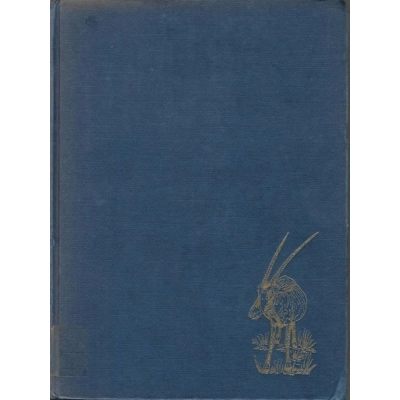Breeding Endangered Species in Captivity edited by R.D. Martin
Units in Stock 1
$50.00 inc. tax
Breeding Endangered Species in Captivity edited by R.D. Martin
Format: Hardcover, 420 pages
Publisher: Academic Press, 1975
ISBN: 0124748503
Condition: Good; No dust jacket; Fading on the spine; minor fading on the covers.
Breeding Endangered Species in Captivity, edited by R.D. Martin, is a conference proceedings focused on the management and conservation of endangered animals in captive environments. The book contains papers from a symposium organized by the Zoological Society of London, addressing the scientific and practical challenges of captive breeding programs in zoos and wildlife parks.
Challenges of captive breeding: The text explores the various biological and behavioral challenges involved in breeding wild animals in human-controlled settings. It touches on issues like artificial environments affecting animal health and behavior, and the difficulty of ensuring reproductive success for certain species.
Genetic diversity: A key issue addressed in the book is the risk of inbreeding within small captive populations. The text highlights how limited genetic diversity can lead to reduced fitness and an increased risk of extinction for a species.
Reintroduction programs: The book discusses the ultimate goal of many captive breeding programs: reintroducing animals back into their natural habitats. It details the steps and considerations necessary for a successful reintroduction to help restore wild populations.
Historical context: As a text from the 1970s, the book documents a pivotal period when zoos began shifting their focus from pure entertainment to scientific conservation. It captures early efforts and scientific understandings of captive breeding before the implementation of more modern genetic management plans, such as the Species Survival Plan (SSP) established in 1981.
Case studies: The book features specific examples and case studies of different species, including mammals, birds, and reptiles, to illustrate successes and failures in early captive breeding efforts. This allows for a deeper examination of the factors influencing breeding success for various types of animals.
Format: Hardcover, 420 pages
Publisher: Academic Press, 1975
ISBN: 0124748503
Condition: Good; No dust jacket; Fading on the spine; minor fading on the covers.
Breeding Endangered Species in Captivity, edited by R.D. Martin, is a conference proceedings focused on the management and conservation of endangered animals in captive environments. The book contains papers from a symposium organized by the Zoological Society of London, addressing the scientific and practical challenges of captive breeding programs in zoos and wildlife parks.
Challenges of captive breeding: The text explores the various biological and behavioral challenges involved in breeding wild animals in human-controlled settings. It touches on issues like artificial environments affecting animal health and behavior, and the difficulty of ensuring reproductive success for certain species.
Genetic diversity: A key issue addressed in the book is the risk of inbreeding within small captive populations. The text highlights how limited genetic diversity can lead to reduced fitness and an increased risk of extinction for a species.
Reintroduction programs: The book discusses the ultimate goal of many captive breeding programs: reintroducing animals back into their natural habitats. It details the steps and considerations necessary for a successful reintroduction to help restore wild populations.
Historical context: As a text from the 1970s, the book documents a pivotal period when zoos began shifting their focus from pure entertainment to scientific conservation. It captures early efforts and scientific understandings of captive breeding before the implementation of more modern genetic management plans, such as the Species Survival Plan (SSP) established in 1981.
Case studies: The book features specific examples and case studies of different species, including mammals, birds, and reptiles, to illustrate successes and failures in early captive breeding efforts. This allows for a deeper examination of the factors influencing breeding success for various types of animals.
Product Code: inLk9qU
Product Condition: New

Updating Order Details
Please do not refresh or navigate away from the page!

